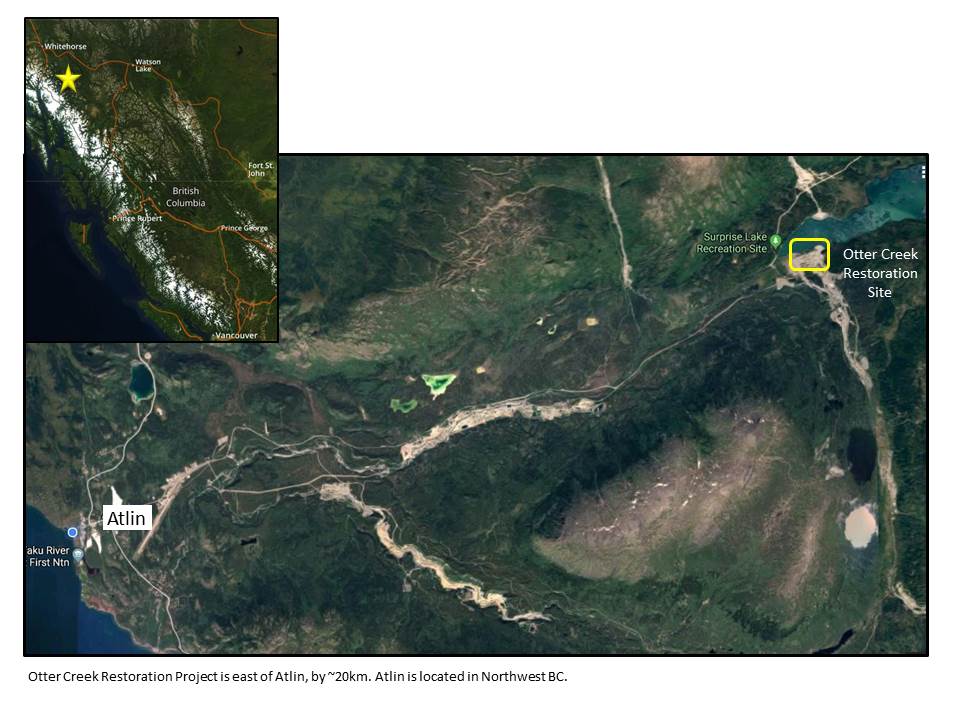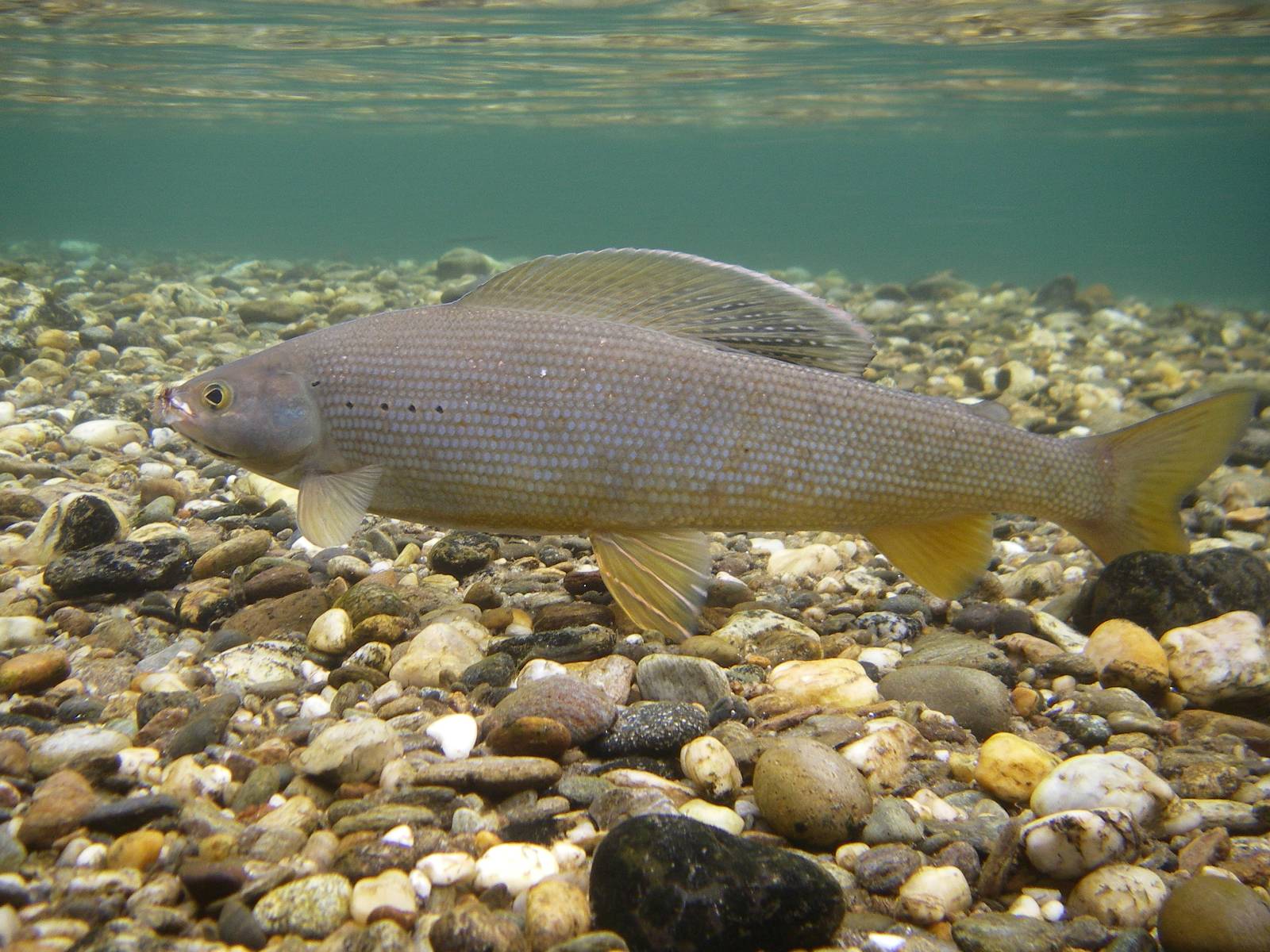The Lower Otter Creek Wetland Restoration Project showcases the strength of working together to achieve conservation goals across the province. From Leadership to funding, partnerships have been key to the project’s success.
The Taku River Tlingit First Nation (TRTFN) has led the project in close association with the BC Ministry of Energy, Mines and Low Carbon Innovation (EMLI), the community of Atlin, and consultants. The Ministry of Environment and Climate Change Strategy (MOE) provided funding through the Conservation Economic Stimulus Initiative for ecosystem and conservation initiatives. The placer mining industry also provided funding, exemplifying the power of partnerships across public, private, local, and provincial scales.
Thanks to hard work and collaboration, project proponents have successfully restored a historically altered creek and enhanced habitat around Lower Otter Creek and Surprise Lake—remote wetland areas roughly 20 km from Atlin, BC.
A joint effort
The Habitat Conservation Trust Foundation (HCTF) is responsible for the management and administration of a $700,000 grant provided by the MOE through the province’s Conservation Economic Stimulus Initiative (CESI)—an initiative designed to create conservation jobs for people who have been disproportionately affected by the pandemic.
The project has also received additional funding and in-kind support from the placer mining industry, TRTFN, the provincial government, consultants, and the local community—a testament to the notion that all players truly have a “seat at the table”.
Jackie Caldwell, project lead and Mining Officer for TRTFN, has seen the power of partnerships first-hand and believes the project offers an opportunity to promote future collaboration within the community.
“It’s been really great to see that kind of collaboration coming together. I’m hoping that the project will showcase to the entire Atlin community, that if we put our minds together, we can achieve great things.”
About the project
The project began in 2017 and aims to restore a historically altered creek, stabilize the shoreline and improve water quality—all of which will benefit local wildlife, including Arctic grayling populations who have experienced notable declines over the past decade.
Several other species will also benefit from the project including bears, moose, and in the future, caribou. The area is currently a barrier for caribou migration, but project leads are hopeful that the new vegetation will expand the historic migration corridor that has been heavily fragmented by industrial development across northern BC.
“The goal of the project is essentially to take a non-productive portion of the stream and make it productive for wildlife use again,” explains Caldwell.
By diverting Lower Otter Creek into a more gently sloped path, the project has successfully turned a fast-flowing creek into a slow, meandering one. This change has allowed sediment from upstream mining activities and unstable slopes to settle out before entering Surprise Lake, improving both water quality and shoreline stability, and creating an environment conducive to vegetation growth.
To date, the engineering and construction work has been completed and additional plantings are scheduled for the spring of 2022.

Participation where it’s least expected
Due to a long history of placer mining in the region, the damage is considered a legacy disturbance, meaning there is no sole party that can be held responsible.
“It was a great starting point because it offered a project that we could all work on together,” says Caldwell.
Some of her favourite memories have involved collaboration with the community and she specifically recalls a time when an Atlin local volunteered to collect bear scat after posting the request on Facebook.
“One way to revegetate is to utilize natural seeds from the area like soapberry, crowberry, and Saskatoon berry,” explains Caldwell. However, to ensure successful germination, the seeds need to pass through the digestive tract of an animal.
Thanks to the support of an eager community member, Caldwell was able to collect more scat and has since distributed the native seeds throughout the site. “This was a great way to bring different people into the picture.”
Honouring Khustìyxh
By bringing multiple stakeholders together, the Lower Otter Creek Wetland Restoration Project has not only highlighted the power of partnerships, but it has also honoured the Tlingit ‘way of life’— khustìyxh.
“Khustìyxh is the concept that we’re not here to take from the land. The Tlingit are here to make sure the land prospers for future generations and everything we do should come back to that concept,” explains Caldwell.
The project has taken a historically disturbed area and given it new life, allowing future generations to both enjoy and live off the land.
The Conservation Economic Stimulus Initiative is funded by B.C.’s Ministry of Environment and Climate Change Strategy which has allocated $10 million in funding for ecosystem and species conservation. As part of B.C.’s Economic Recovery Plan, this program will support B.C.’s economic recovery by investing in ecosystem and species restoration projects across the province. These projects will employ British Columbians, with a focus on demographics such as young adults, women, and Indigenous People who have been disproportionately affected by COVID-19, by funding “shovel ready” conservation projects that will also help to protect and improve B.C.’s diverse ecosystems, wildlife, and freshwater fish species.






